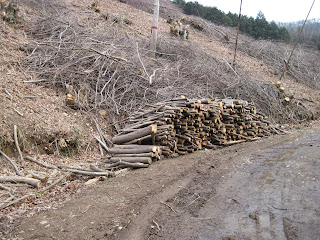Shiitake Crab Cakes with Roasted Red Pepper and Asparagus Sauce
Created by Rachel
 |
| After whipping up this mouth watering crab creation, Rachel topped it off with some sprouts and balsamic vinegar. This small portion was all the entire staff at F&FP had to fight for, and sadly not everyone made it out alive. It was THAT good! |
Crab cakes really hit the spot when craving a guilty pleasure. Adding shiitakes and using red pepper and asparagus in a sauce added a new dimension to the traditional cakes. The sauce is more of a spread than anything and is really nice when served cold with the warm cakes.
Here's what you'll need:
About ½ lb crab meat, chunked
1 bunch green onions, chopped
½ C sour cream
About 2 C Panko bread crumbs
About 1/3 C parmesan
1 tbsp lemon juice
Salt and pepper
Garlic powder
3 C Shiitakes, thinly sliced
1 small shallot
½ small white onion
2 cloves garlic
1 tsp thyme
1 tsp tarragon
2 tbsp parsley
1 tbsp chives
1 tsp or so red pepper flakes
1 tbsp celery flakes
2 eggs plus 2 tbsp water, beaten
1 C flour
2 Tbsp extra virgin olive oil
About 1 C coconut oil, or other frying oil
Heat the olive oil in a skillet, add garlic, white onion, and shallot. When soft, add shiitakes. Add thyme, tarragon, salt and pepper, chives, red pepper and celery flakes when almost done. Set aside to cool.
In a large bowl, combine crab, sour cream, 1 C Panko, green onions, parmesan, and lemon juice. Add garlic powder, salt, and pepper to taste. Mix in cooled mushroom mixture. Add bread crumbs if it is not sticky enough.
On a plate, combine the flour with salt, pepper, and a little thyme and sage. Beat the eggs and water together in a bowl and pour about 1 C bread crumbs on another plate. Form small cakes and coat first in the flour, then the egg, then breadcrumbs.
Heat the oil in an iron skillet until sizzling, add the crab cakes and cook until dark golden brown, keeping an eye on the oil so it doesn’t overheat. Pat off excess oil and serve with sauce and sprouts and drizzle with balsamic vinegar.
Roasted Red Pepper and Asparagus Sauce
1 half bunch small asparagus stalks, tough ends trimmed off
2 large red bell peppers or about 5 small, cut in half
extra virgin olive oil
salt and pepper
lemon juice
about 8 oz ricotta cheese
a little grated parmesan
Toss the peppers and asparagus in oil and lemon. Sprinkle on salt and pepper. Roast at 375 degrees for about 30 minutes, or until soft and slightly charred.
Using an immersion blender or food processor, puree the peppers and asparagus with the Parmesan and ricotta. Add salt and pepper to taste.







